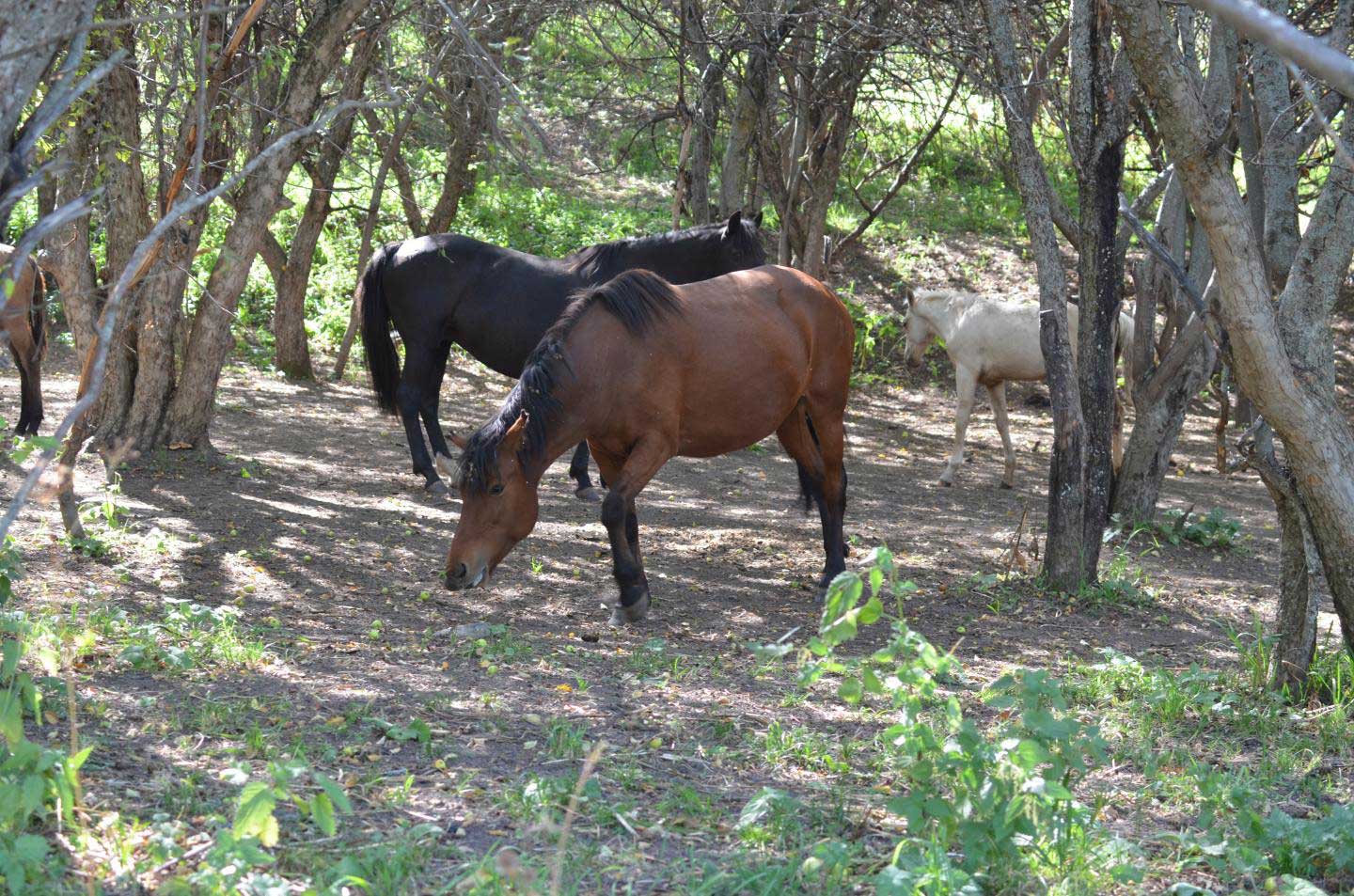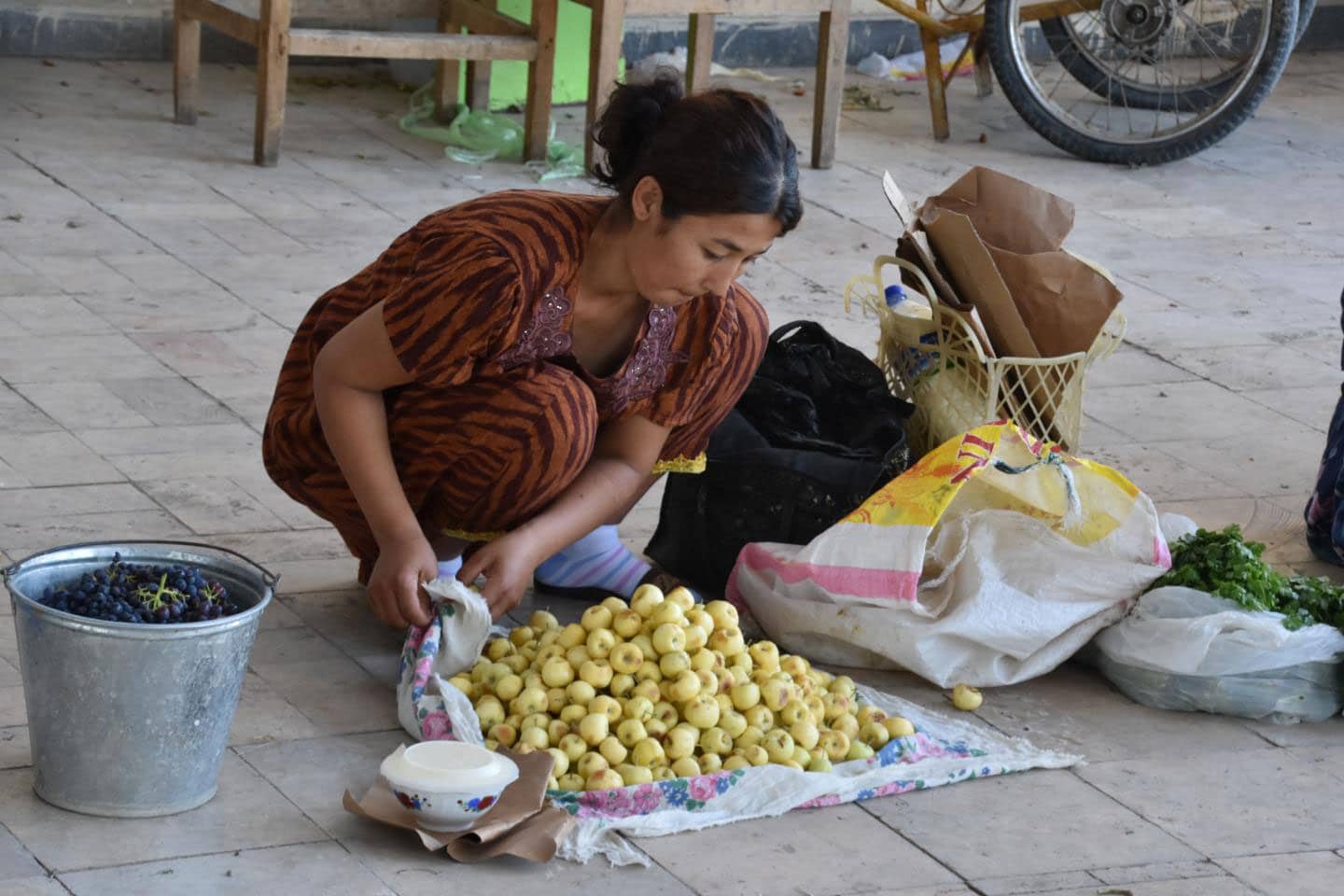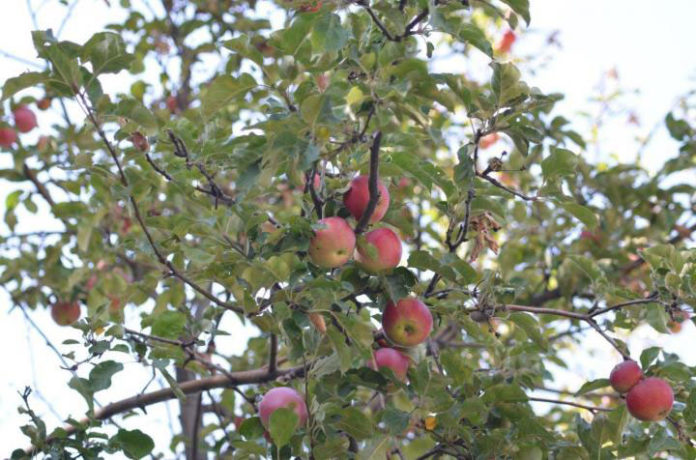The apple is one of the most economically and culturally significant fruits in the world today, and it is grown in all temperate zones. With over a thousand landraces recognized, the modern apple provides a unique case study for understanding plant evolution under human cultivation.
Depictions of large red fruits in Classical art demonstrate that domesticated apples were present in southern Europe over two millennia ago, and ancient seeds from archaeological sites attest to the fact that people have been collecting wild apples across Europe and West Asia for more than ten thousand years. While it is clear that people have closely maintained wild apple populations for millennia, the process of domestication, or evolutionary change under human cultivation, in these trees is not clear.
Recent archaeological finds of ancient preserved apple seeds across Europe and West Asia combined with historical, paleontological, and recently published genetic data are presenting a fascinating new narrative for one of our most familiar fruits.

CREDIT
Artur Stroscherer
In this study, Robert Spengler of the Max Planck Institute for the Science of Human History traces the history of the apple from its wild origins, noting that it was originally spread by ancient megafauna and later as a process of trade along the Silk Road. These processes allowed for the development of the varieties that we know today.
Depictions of large red fruits in Classical art demonstrate that domesticated apples were present in southern Europe over two millennia ago, and ancient seeds from archaeological sites attest to the fact that people have been collecting wild apples across Europe and West Asia for more than ten thousand years.
Few studies have suggested that the modern apple is a hybrid of at least four wild apple populations and according to scientists, the Silk Road trade routes were responsible for bringing these fruits together and causing their hybridization. Archeological remains of apples as preserved seeds have been recouped from locales crosswise over Eurasia, and these disclosures bolster the possibility that foods grown from the ground trees were among the commodities that proceeded onward these early trade routes.

CREDIT
Robert Spengler
Spengler recently summarized the archaeobotanical and historical evidence for cultivated crops on the Silk Road in a book titled Fruit from the Sands, published with the University of California Press. Spengler suggested that the apple has a deep correlation with the Silk Road – much of the genetic material for the modern apple originated at the heart of the ancient trade routes in the Tien Shan Mountains of Kazakhstan. In addition, the procedure of exchange caused the hybridization occasions that offered ascend to the large red sweet fruits in our produce markets.
A better comprehension of how and when apple trees evolved to produce larger fruits is an important question for scientists, as fruit trees do not appear to have followed the same path towards domestication as other, better-understood crops, such as cereals or legumes.
Numerous kind of wild and anthropogenic forces apply selective pressure on crops in the fields, thus it is not always easy to recreate what pressures caused which evolutionary changes.
In that case, observing evolutionary processing in modern and fossil plants can help scholars interpret the process of domestication. Fleshy sweet fruits evolve to attract animals to eat them and spread their seeds; large fruits specifically evolve to attract large animals to disperse them.
In this study, Spengler studied the processes in the wild that set the stage for domestication. Spengler suggests that understanding the process of evolution of large fruits in the wild will help us understand the process of their domestication.
He said, “Seeing that fruits are evolutionary adaptations for seed dispersal, the key to understanding fruit evolution rests in understanding what animals were eating the fruits in the past.”
“Many fruiting plants in the apple family (Rosaceae) have small fruits, such as cherries, raspberries, and roses. These small fruits are easily swallowed by birds, which then disperse their seeds. However, certain trees in the family, such as apples, pears, quince, and peaches, evolved in the wild to be too large for a bird to disperse their seeds.”
From the fossils and genetic evidence, Spengler found that these large fruits evolved several million years before humans started cultivating them. He also found that large fruits are an evolutionary adaptation to attract large animals that can eat the fruits and spread the seeds.
He explained, “Certain large mammals, such as bears and domesticated horses, eat apples and spread the seeds today. However, prior to the end of the last Ice Age, there were many more large mammals on the European landscape, such as wild horses and large deer.”
“Evidence suggests that seed dispersal in the large-fruiting wild relatives of the apple has been weak during the past ten thousand years since many of these animals went extinct. The fact that wild apple populations appear to map over glacial refugial zones of the Ice Age further suggests that these plants have not been moving over long distances or colonizing new areas in the absence of their original seed-spreaders.”
Wild apple tree populations were isolated after the end of the last Ice Age, until humans started moving the fruits across Eurasia, in particular along the Silk Road. Once humans brought these tree lineages back into contact with each other again, bees and other pollinators did the rest of the work.
The resulting hybrid offspring had larger fruits, a common result of hybridization. Humans noticed the larger fruiting trees and fixed this trait in place through grafting and by planting cuttings of the most favored trees. Thus, the apples we know today were primarily not developed through a long process of the selection and propagation of seeds from the most favored trees, but rather through hybridization and grafting.
This process may have been relatively rapid and parts of it were likely unintentional. The fact that apple trees are hybrids and not “properly” domesticated is why we often end up with a crabapple tree when we plant an apple seed.
Spengler said, “The domestication process is not the same for all plants, and we still do not know much about the process in long-generation trees. It is important that we look past annual grasses, such as wheat and rice, when we study plant domestication. There are hundreds of other domesticated plants on the planet, many of which took different pathways toward domestication. Ultimately, the apple in your kitchen appears to owe its existence to extinct megafaunal browsers and Silk Road merchants.”
